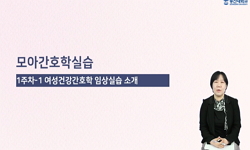Cancer patients and their family members would be greatly shocked after the patients are diagnosed to have cancer, and thereafter, would experience an emotional and psychological crisis. In addition, cancer patients would experience heavier physical a...
http://chineseinput.net/에서 pinyin(병음)방식으로 중국어를 변환할 수 있습니다.
변환된 중국어를 복사하여 사용하시면 됩니다.
- 中文 을 입력하시려면 zhongwen을 입력하시고 space를누르시면됩니다.
- 北京 을 입력하시려면 beijing을 입력하시고 space를 누르시면 됩니다.
암환자와 가족의 우울과 자살의도 = A Study on Cancer Patients' and Their Family Members' Depression and Suicidal Ideation
한글로보기https://www.riss.kr/link?id=T11232838
- 저자
-
발행사항
서울 : 한양대학교 임상간호정보대학원, 2008
-
학위논문사항
학위논문(석사) -- 한양대학교 임상간호정보대학원 , 호스피스간호전문전공 , 2008. 2
-
발행연도
2008
-
작성언어
한국어
- 주제어
-
발행국(도시)
서울
-
형태사항
vi, 90 p. ; 26 cm.
-
일반주기명
국문요지: p. i-ii
Abstract: p. 88-90
지도교수: 김분한
참고문헌: p. 61-70 - 소장기관
-
0
상세조회 -
0
다운로드
부가정보
다국어 초록 (Multilingual Abstract)
Cancer patients and their family members would be greatly shocked after the patients are diagnosed to have cancer, and thereafter, would experience an emotional and psychological crisis. In addition, cancer patients would experience heavier physical and emotional burdens during treatment due to not only pain from the disease itself but also side-effects and inconveniences caused by surgery, chemical therapy and radiation treatment, Among their major emotional responses, depression is the most serious problem affecting their family members, and even leading to suicide in some serious cases. The purpose of this study was to survey cancer patients and their family members for their depression and suicidal ideation and thereby, provide for some basic data useful to planning of an effective clinical nursing.
For this study, the researcher randomly sampled the patients and their family members from 2 university hospitals in Seoul, and thereby, collected the data from October 25 through November 10, 2007. The sample consisted of 54 cancer patients hospitalized and their 54 family members.
In order to measure the depression levels, the researcher used Zung's "Self-rating Depression Scale" translated by Song Oh-hyun (1977), and in order to measure the suicidal ideation, the researcher modified and used the Suicide Ideation Scale" completed by Harlow, et aL, (1986) and translated by Kim Hyung-soo (2002) as well as "the Suicidal Ideation Questionnaire" developed by Reynolds (1987) and translated by Shin Min-seop (1992).
The collected data were processed using the SPSS/ WIN 110 program for percentages, T-test, ANOVA, Pearson's Correlation Coefficients and Scheffe's post-validation test.
The results of this study can be summarized as follows;
1. It was found that 27.8% of the cancer patients had experienced depression, while 220% of their family members had experienced depression.
2. It was disclosed that 90.7% of the cancer patients and 68% of their family members had conceived suicide.
3. In case of cancer patients, depression was correlated with age, and the group suffering most from pain were more depressed than the group feeling no pain. In case of their family members, depression was correlated with marital status, academic background and monthly income. And Catholics and atheists were more depressed than Protestants.
4. In case of cancer patients, suicidal ideation was correlated with timing of the initial diagnosis and period of treatment. And the suicidal ideation was stronger in the group who had been hospitalized more frequently, the group who had their cancer spread or reoccurred and the group who had suffered most from pain. And the group who had their cancer reoccurred and re-treated had a stronger suicidal ideation than the group who were being treated initially or whose cancer was being traced. In case of family members, the group whose patients had the cancer spread or reoccurred had a stronger suicidal ideation, and the group whose patients had the cancer reoccurred and re-treated had a stronger suicidal ideation than the group whose patients were being treated initially.
5. Depression was found correlated significantly with suicidal ideation in both patients (r=.503, p=<.001) and their family members (r=.292, p=.040).
As discussed above, cancer patients and their family members experience depression during hospitalization and treatment after diagnosis, and in extreme cases, they conceive suicide. Thus, if the factors affecting cancer patients' and their family members' depression should be determined to be relieved, an effective nursing intervention would be feasible to prevent their suicides. In this vein, nurses are obliged to assess and predict the risky factors affecting cancer patients' and their family members' depression and suicidal ideation in advance if they suspect that they are depressed, and thereby, provide them with adequate nursing intervention. Lastly, it is hoped that a clinical suicide prevention program will be developed to prevent cancer patients and their family members from committing suicide.
국문 초록 (Abstract)
암환자와 가족들은 암 진단이 내려진 후 커다란 충격을 받게 되며 정서 심리적인 위기상황을 겪게 된다. 또한 치료과정동안 질병자체의 고통뿐 아니라 수술, 화학요법, 방사선치료 등의 치...
암환자와 가족들은 암 진단이 내려진 후 커다란 충격을 받게 되며 정서 심리적인 위기상황을 겪게 된다. 또한 치료과정동안 질병자체의 고통뿐 아니라 수술, 화학요법, 방사선치료 등의 치료로 인한 부작용과 불편감으로 신체적, 정신적 부담감은 가중된다. 이들 암환자들이 경험하는 주된 정서반응 중 우울은 가장 심각한 정서적 문제로 지적되며, 가족에까지 영향을 미치고, 심할 경우 자살에까지 이르게 된다. 이에 본 연구는 암환자와 가족의 우울과 자살의도를 파악하여 이들 암환자와 가족에 대한 효과적인 임상간호계획 수립을 위한 기초자료를 제공하고자 한다.
본 연구의 대상자는 서울 소재 2개 대학병원 내에서 편의추출 하였고, 자료 수집은 2007년 10월 25일부터 11월 10일까지이며, 입원한 암환자 54명과 암환자가족 50명을 대상으로 총 104명으로부터 자료를 수집하여 분석하였다.
연구도구는 우울측정도구로 Zung의 Self - rating Depression Scale을 송옥현(1977)이 번역한 도구를 사용하였고, 자살 의도는 Harlow 등(1986)이 완성한 Suicide Ideation Scale을 김형수(2002)가 번안해 사용한 도구와 Reynolds(1987)의 Suicidal Ideation Questionnaire를 신민섭(1992)이 번안한 도구를 수정 보완하여 사용하였다.
수집된 자료는 SPSS/WIN 12.0프로그램을 이용하여 백분율, t-test, ANOVA, Pearson's Correlation Coefficient등의 방법을 사용하였고, 사후검증은 Scheffe test로 하였다.
연구의 결과는 다음과 같다.
1. 암환자와 가족의 우울을 보면 환자의 27.8%가 우울을 경험하였고, 가족의 경우 22%가 우울을 경험한 것으로 나타났다.
2. 환자와 가족의 자살의도를 보면 자살의도가 있는 환자는 90.7%며, 가족은 68%로 나타났다.
3. 특성별 우울을 보면 환자의 경우 연령과 관련이 있었고, 통증정도에서는 통증정도가 가장 높은 군이 통증이 전혀 없는 군에 비해서 우울정도가 높은 것으로 나타났다. 가족의 경우는 결혼상태, 교육정도, 월수입과 관련이 있었고, 종교에서 천주교와 무교가 기독교에 비해서 우울정도가 높게 나타났다.
4. 특성별 자살의도 보면 환자의 경우 초진단시기, 치료기간과 관련이 있었고, 입원횟수에서는 입원횟수가 많은 군에서, 전이·재발 유무에 있어서는 전이·재발된 경우, 통증정도에서는 통증정도가 가장 높은 군이 통증이 전혀 없는 군에 비해서 자살의도가 높은 것으로 나타났다. 현재치료시기에 있어서는 재발· 재치료기에 있는 환자가 치료초기와 추적기 환자에 비해서 자살의도가 높았다. 가족의 경우도 환자에서와 마찬가지로 전이·재발된 경우에서 자살의도가 높았고, 재발·재치료기의 가족이 치료초기인 가족에 비해서 자살의도가 높았다.
5. 우울과 자살의도와의 상관관계는 환자(r=.503, p=<.001)와 가족(r=.292, p=.040)에서 모두 유의미한 상관관계를 나타냈다.
이상에서 볼 때 암환자와 가족은 진단받고 입원하여 치료받는 과정동안 우울을 경험하게 되며, 심한 경우 자살의도를 가지게 된다. 암환자나 가족의 우울에 영향을 미치는 요인을 파악하고 이를 감소시키는 것은 자살 예방의 효과적인 중재가 된다고 할 수 있다. 간호사는 우울 및 자살의도와 관련 있는 환자나 가족의 특성이 있는 경우 사전에 이들에 대한 정확한 간호사정을 통해 자살 위험요인을 예측 평가하고, 이에 따른 적절한 간호중재를 제공하여야 할 것이다. 또한 이를 바탕으로 암환자와 가족의 자살을 예방하기위한 실무에 적용할 수 있는 자살예방 프로그램 개발을 모색하여야 할 것이다.
목차 (Table of Contents)
- 국문초록 = i
- Ⅰ. 서론 = 1
- 1. 연구의 필요성 = 1
- 2. 연구의 목적 = 4
- 3. 용어 정의 = 5
- 국문초록 = i
- Ⅰ. 서론 = 1
- 1. 연구의 필요성 = 1
- 2. 연구의 목적 = 4
- 3. 용어 정의 = 5
- 4. 연구의 제한점 = 7
- Ⅱ. 문헌고찰 = 8
- 1. 암환자 우울 = 8
- 2. 암환자의 자살 = 16
- 3. 우울과 자살 = 26
- Ⅲ. 연구방법 = 29
- 1. 연구 설계 = 29
- 2. 연구 대상 = 29
- 3. 연구 도구 = 30
- 4. 자료수집 방법 = 32
- 5. 자료 분석 방법 = 33
- Ⅳ. 연구결과 = 34
- 1. 암환자와 가족의 일반적 특성 = 34
- 2. 암환자와 가족의 질환관련 특성 = 36
- 3. 암환자와 가족의 우울 = 39
- 4. 암환자와 가족의 자살의도 = 40
- 5. 특성에 따른 암환자와 가족의 우울 = 42
- 6. 특성에 따른 암환자와 가족의 자살의도 = 44
- 7. 암환자와 가족의 우울과 자살의도와의 상관관계 = 47
- Ⅴ. 논의 = 49
- Ⅵ. 결론 및 제언 = 57
- 1. 결론 = 57
- 2. 제언 = 60
- 참고문헌 = 61
- 부록 = 71
- ABSTRACT = 88












